Melancholy Interpunction
It doesn’t matter which Hong Sang-soo film you see first, the same thing always catches your eye. Long before you’re able to read the rhythm of neurotic directors, giddy admirers, and awkward exchanges, it’s all the many zooms that grab your attention, the frame suddenly rushing towards you or away from you with bewildering regularity. But just as all these similar encounters soon blur together into something more profound, so too do you learn to understand the grammar of these movements, a sly system of interpunction that arranges each familiar situation differently. Hong’s zooms partition, separate, isolate, amplify; they are semicolons, indentations, parentheses, exclamation marks. They split off small talk from the heart of the matter, they usher in soliloquies, they make characters stew in their own embarrassment, they place a magnifying glass on pain.
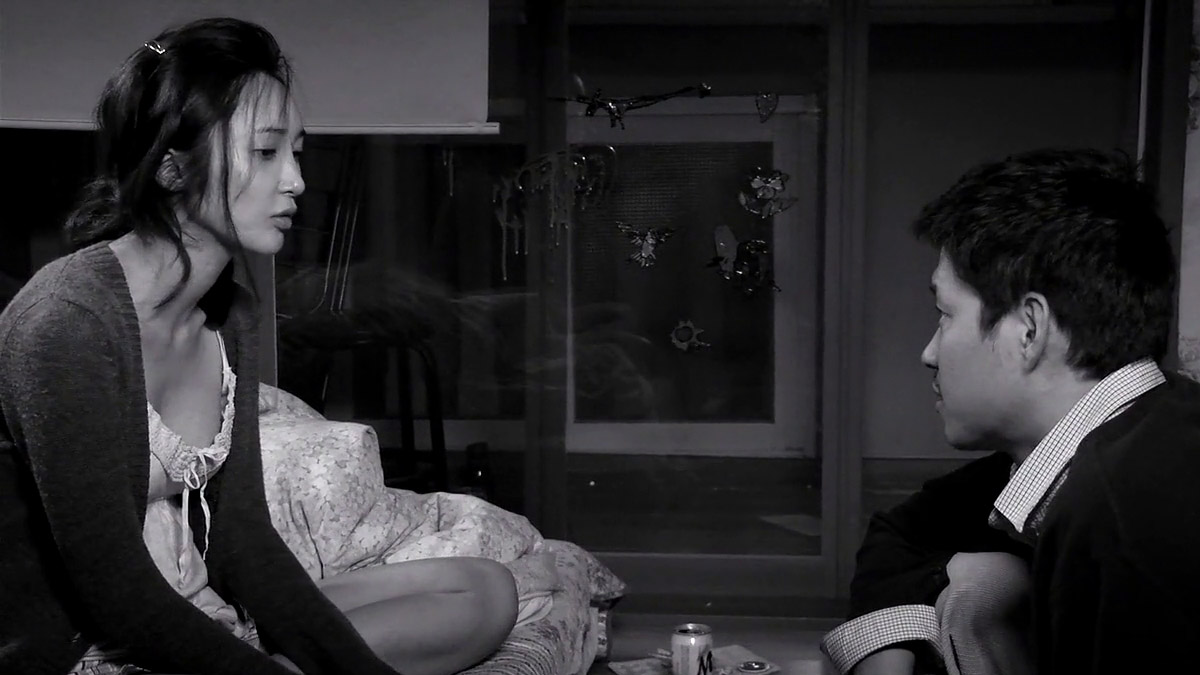
As Seong-jun sits on Kyung-jin’s bed in The Day He Arrives and the two of them discuss TV sizes and reading, the only indication of the fireworks to come is the zoom, slicing away the excess from the side of the frame so it’s them and nothing else. And with the frame pressing upon them in such a way, what else can they do but react? Drunkenness, jealousy, and recrimination lead inexorably to tears and raised voices and then onwards to droll despair.
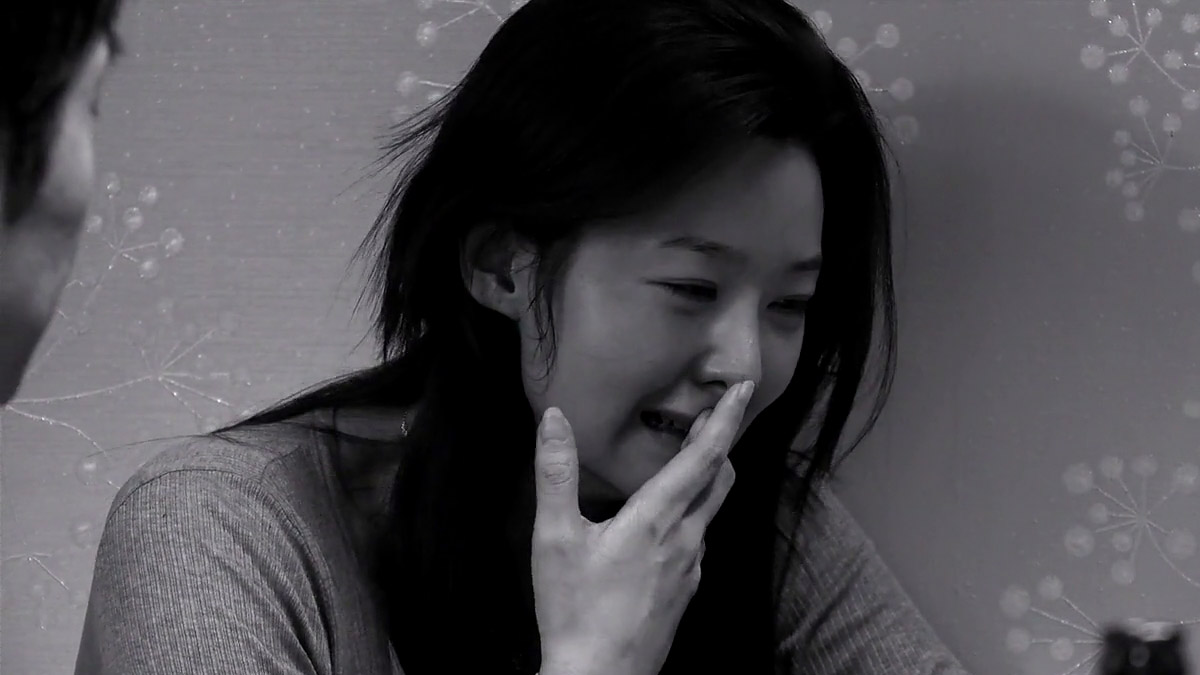
Later on the same day, or what seems like it at least, Bo-ram is eating with Seong-jun and Young-ho, an innocent conversation about ideals and commonalties, about women and men. And suddenly there is a shift, Bo-ram starts to talk of sorrow and the camera zeroes in on her face as if it can sense the feelings beginning to bubble up. Young-ho remains in frame as he talks about how she lost her dog, before the camera burrows yet further, her face, her tears, her fingers before her mouth now at the very centre of the image. The story of a connection, of being needed by someone, of being held. A passing anecdote transformed into something else, a moment of unmediated pain that stands for all the others the film doesn’t show.
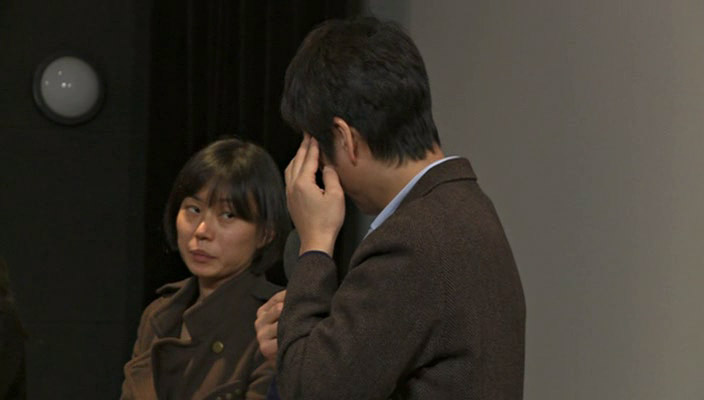
But punctuation doesn’t have to be despairing, it can be funny too. In Oki’s Movie, Nam Jin-gu is giving a Q&A for his latest short, he’s drunk and even explaining its theme is a struggle, the camera swift to advance to accentuate his unease. But after withdrawing briefly to allow him a moment of respite, it surges forward once again once an audience member begins to question him on his infidelities. The zoom roots him to the spot and makes the auditorium around him disappear, there is nothing to say and nowhere to hide, an acid bath of wonderful discomforture, made all the better by the one disapproving face kept in the frame.
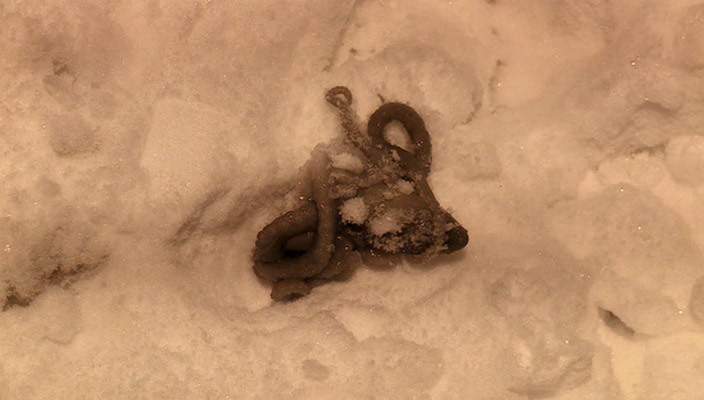
Sad sack Professor Song is hardly immune to embarrassment either. On one snowy day, he’s stood up by his class of students, needled by his boss, and entirely unable to fend off the increasingly personal questions Jin-hu and Oki throw at him. Treating yourself with octopus won’t make things better, mortification never sits well in the stomach. One final text message and Song spews out the day’s indignities, a small knot of slimy discharge, just a speck in the snow. But while Song says things are better now, the zoom says otherwise, as the dark coils swell to now dominate the image: at once a wry underlining of this worst of days and an oblique symbol of inextricable entanglement.
The more you practice a grammar, the better at it you become, as Right Now, Wrong Then irrefutably proves. When you’re working with two almost identical scenarios, it all comes down to where you place the punctuation. Starting, say, a café scene with a close-up on two pairs of hands and zooming out is not the same as starting with both bodies in frame and zooming in. In a film where everything hinges on the tiniest of details, Hong is a master of spacing the text.
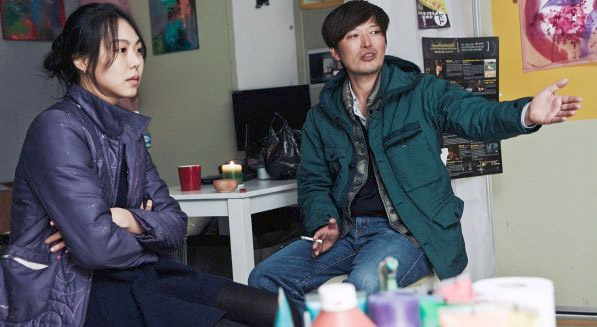
Hee-jung takes Ham to her studio two times, the first time she adds orange to the painting, the second time green. Both times she sits back down and surveys her work, with the camera drawing nearer to examine her contemplation. But not all zooms are made equal and what they choose to highlight can tip the balance. With Ham alongside Hee-jung in the frame, it is, as he himself even says, a moment of dislocation, of fondness, of intimacy. When she is alone in the frame, it’s something else entirely, a moment of isolation, anticipation, of tension waiting to be discharged. One good painting, one bad painting, one argument now, the other postponed.
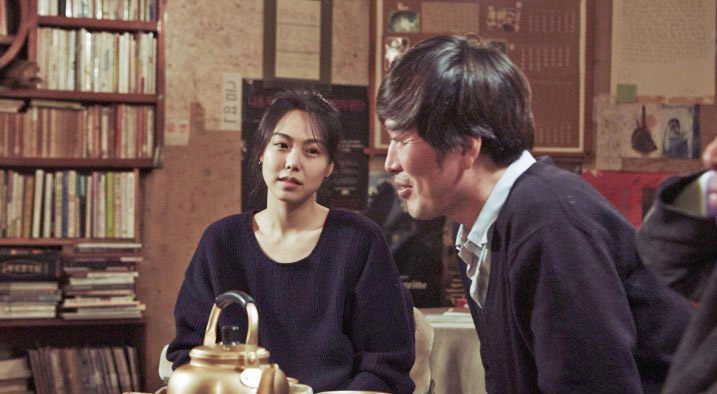
But the most devastating zoom in Right Now, Wrong Then is the one that cannot be repeated and after which nothing will be the same. Ham has accompanied Hee-jung to a friend’s café for a party, a small gathering where Ham’s celebrity and authority hold court. Yet the talk soon turns to women and the mood changes, just as something begins to dawn on Hee-jung’s face. She’s always been at the centre of the frame, but when Ham lets slips he’s married, the camera moves in to scrutinise her every movement, how she stares into space, hangs her head, casts a furtive glance at the man she admired, a thing of the past already. But Ham isn’t finished yet and nor is the camera, the second zoom pushing him out to focus on her and nothing else. One stricken face trapped in the frame, motionless, silent, taut, a naive dream dying a painful public death. If all other zooms are punctuation, this is something else. If Hong is the surgeon of social discomfort, this zoom is the scalpel.


